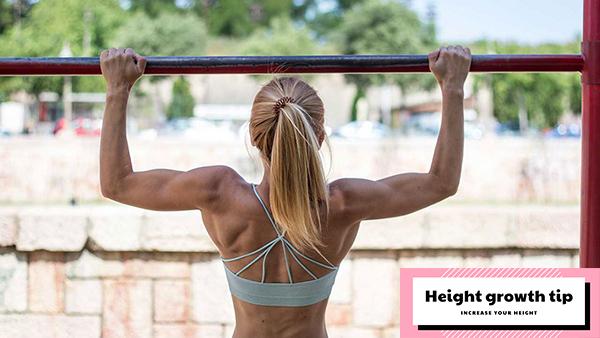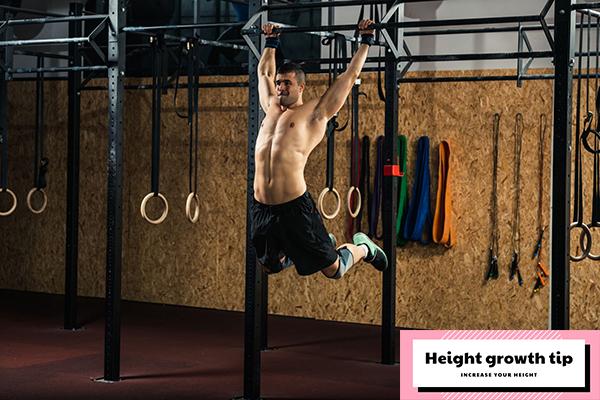Many of us have tried various diets and exercises in hopes of gaining height. From specialized regimens to quirky stretching routines, we’ve explored every avenue imaginable. However, an unexpected contender has emerged: the humble pull-up. The idea that this basic exercise could hold the key to unlocking our growth potential might initially sound too good to be true. Yet, as discussions around this topic gain traction and new research surfaces, it’s hard to ignore the growing whispers of a connection between pull-ups and the human growth hormone (HGH) – the substance that drives our vertical growth during adolescence. Could it be that this fundamental exercise harbors the power to tap into our genetic blueprint, coaxing our bodies to reach greater heights? Let’s explore the realms of science and speculation to decode the enigma surrounding the potential influence of pull-ups on our stature.
Why Pull-Ups Can Enhance the Appearance of Height
While pull-ups won’t actually increase your height, they offer several benefits that can enhance the appearance of being taller and more imposing. Pull-ups improve posture by strengthening the upper body and core muscles, allowing you to stand taller and more upright. They also stimulate human growth hormone and testosterone production, facilitating muscle growth even after reaching full height. The pulling motion itself creates a more pronounced V-taper by broadening the shoulders and chest. Additionally, stronger back and core muscles from pull-ups improve alignment and balance, projecting an aura of confidence. Though pull-ups can’t make you literally taller, the muscular development, improved posture, and overall physique enhancement give the impression of added height and an imposing presence.

Unlock the Full Potential of Pull-Ups:
A Comprehensive Guide Mastering pull-ups can be a game-changer in your fitness journey. To maximize their benefits, it’s essential to approach them with precision and finesse. Choose a comfortable grip, maintain proper posture and body alignment, position the bar at an appropriate height, execute a controlled ascent clearing your chin over the bar, pause briefly at the top, and descend smoothly. Embrace balance by crossing your legs, and maintain a continuous flow without fully extending your arms. By following these steps, you’ll unlock the full potential of pull-ups for your fitness goals.
How Many Pull-Ups to Increase Height in One Week?
Hanging exercises like pull-ups can encourage muscle stretching, but expecting a noticeable height increase within a single week is unrealistic. Height growth is a gradual process. There’s no magic number of pull-ups for height gain, as muscle development varies from person to person. For beginners, use a weight-assisted pull-up machine if necessary. Fitness experts recommend aiming for five pull-ups in the first week and gradually increasing the count, while incorporating other upper body exercises. Remember, consistency and gradual progression are key to achieving your fitness goals and maintaining a healthy lifestyle.

Exploring the Additional Advantages of Incorporating Pull-Ups into Your Fitness Routine:
Pull-ups are a gym staple, but did you know they offer a wealth of benefits beyond just building upper-body strength? Mastering this deceptively simple exercise can unlock advantages that extend far beyond the physical.
They boost grip strength, which is useful for activities like rock climbing and martial arts, while also linked to better heart health. Pull-ups are highly customizable, suitable for all fitness levels by adjusting reps, sets, and resistance. They provide a cardio and calorie-burning workout by engaging multiple muscle groups simultaneously.
Regular pull-up practice offers whole-body advantages like lowering blood pressure, reducing visceral fat, improving blood sugar control, and enhancing insulin sensitivity. This can significantly reduce risks of conditions like type 2 diabetes, obesity, and heart disease.
Pull-ups also benefit mental wellbeing by releasing mood-boosting endorphins and alleviating anxiety, depression, and soreness. Conveniently, they require minimal equipment—just a sturdy bar.
With incredible physical and mental benefits, integrating pull-ups into your fitness routine is a powerful upgrade for overall health and functional strength.

In summary:
Pull-ups offer a wealth of benefits that go beyond just building upper body strength. Incorporating pull-ups into your fitness routine can have a profound impact on your skeletal health. The pulling motion helps elongate your bones and promotes the growth of important cartilage layers, which are crucial for continued development. Additionally, pull-ups take pressure off your bones and joints by partially supporting your body weight.
Beyond their skeletal benefits, pull-ups are also a fantastic full-body exercise that can significantly boost your overall strength and fitness. One particularly noteworthy advantage is their ability to improve your posture, which can even create the illusion of increased height. What makes pull-ups truly versatile is that they can be performed almost anywhere, making them a highly accessible and convenient exercise option.

